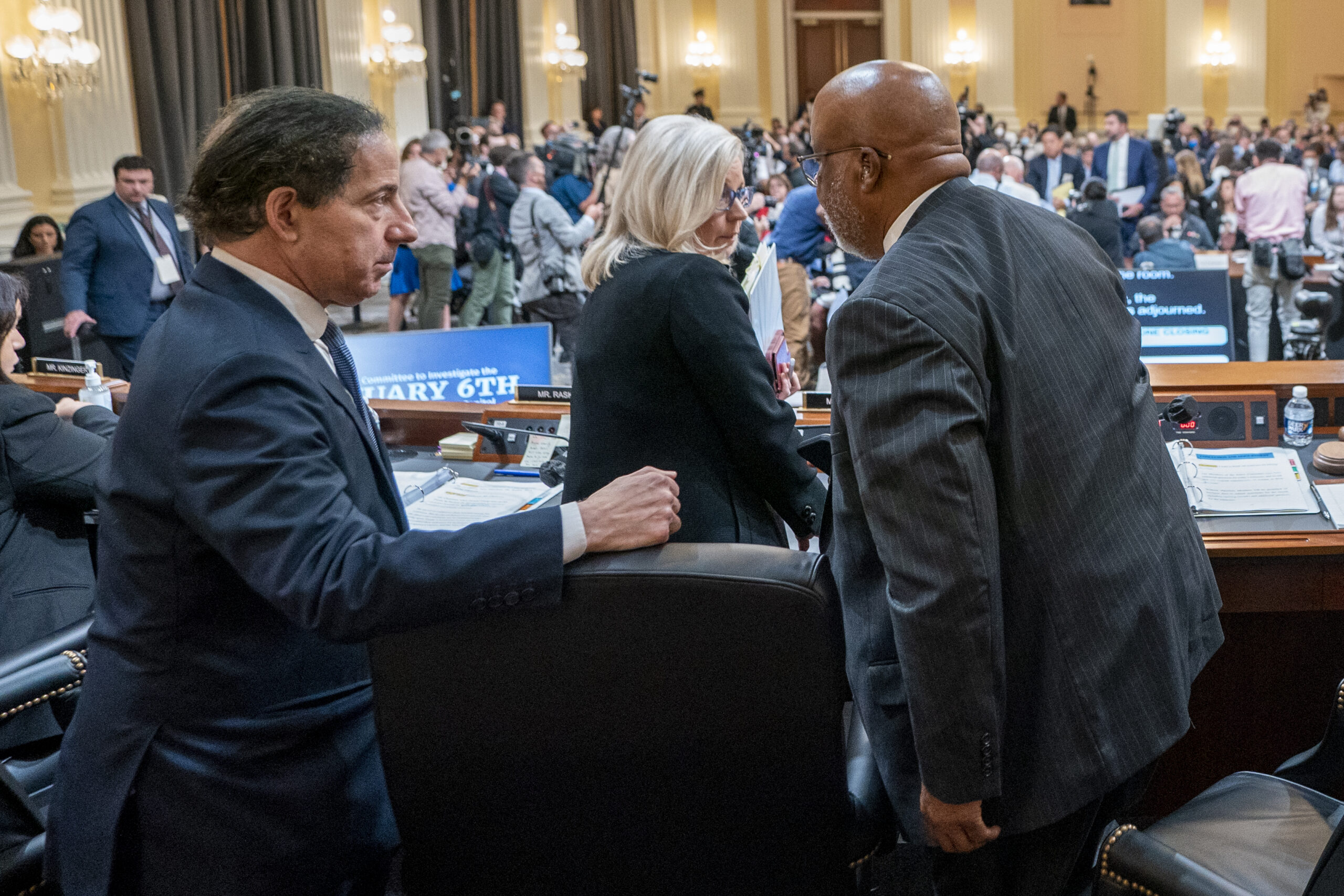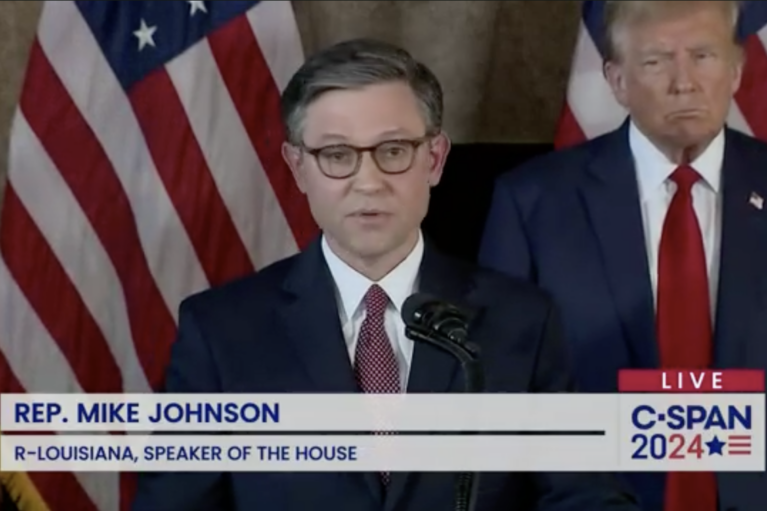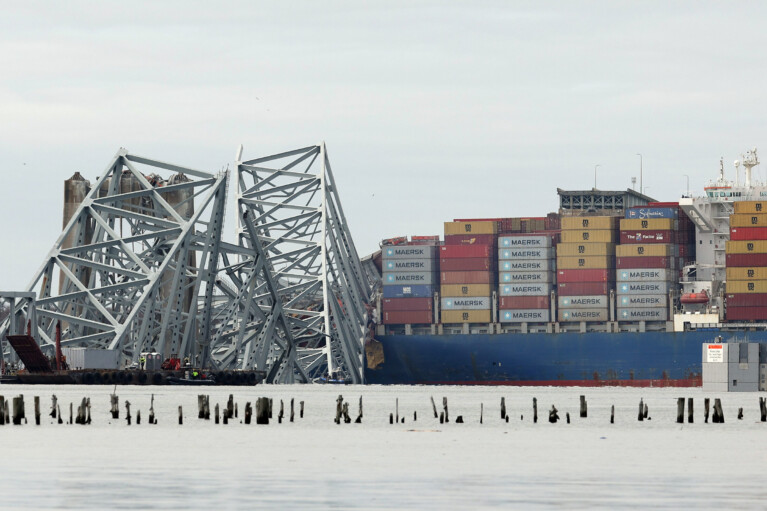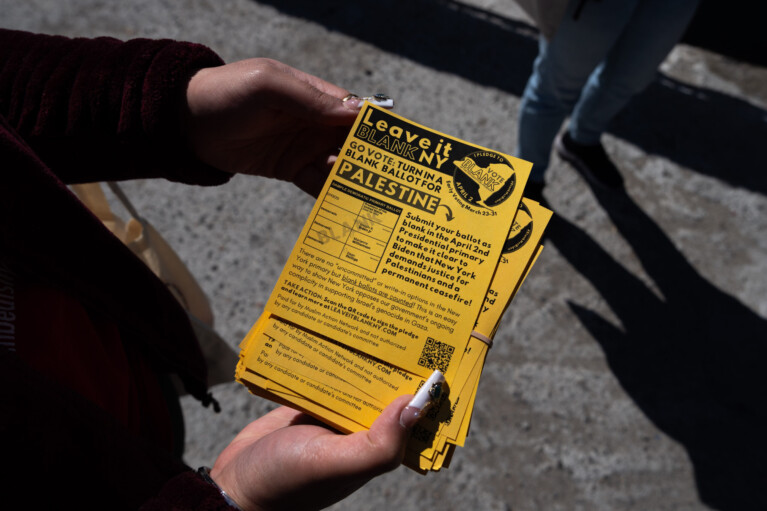Jan. 6 Hearing: Raskin Leads Questioning, Harris Involvement in White House Planning Meeting Revealed

The U.S. House panel investigating Donald Trump’s attempts to overturn the 2020 presidential election results described Tuesday how the president explicitly called on his supporters to come to Washington on Jan. 6, 2021 for a “wild” protest — resulting in an insurrection.
Trump exerted extraordinary influence over the mob, who marched to the Capitol on his orders and undertook the violent attack, testimony showed. Many dispersed only when Trump asked them to do so, hours after mayhem broke out.
Members of the violent extremist groups Proud Boys and Oath Keepers and other Trump supporters interpreted a Dec. 19 tweet from Trump to attend a “wild” Jan. 6 rally in Washington as a call to arms to fight election certification, according to testimony at the wide-ranging hearing, the seventh by the panel.
And for the first time, the committee revealed Maryland Rep. Andy Harris was present at a Dec. 21 White House meeting in which Trump and senior officials discussed a plan to “encourage members of the public to fight the outcome on January 6,” according to testimony at the hearing from Rep. Stephanie Murphy (D-Florida).
Murphy jointly led questioning at the hearing, alongside Maryland Rep. Jamie Raskin (D).
The three-hour session touched on the former president’s social media influence, a militia group’s desire for Trump to invoke the Insurrection Act and a shouting match between White House staff and outside Trump advisers over whether to try to cancel the results of the election.
‘Will be wild’
Much of the committee’s discussion centered on a 1:42 a.m. tweet from Trump on Dec. 19, 2020.
“Big protest in D.C. on January 6th. Be there, will be wild!” Trump wrote.
“When Donald Trump sent out his tweet, he became the first president to call for a crowd to descend on the capital city to block the constitutional transfer of power,” Raskin said.
Chairman Bennie G. Thompson, a Mississippi Democrat, said both violent extremists and “average Trump supporters swept up in the fervor of the day” participated in the attack, and the panel heard testimony from one of each type.
Stephen Ayres, a northeast Ohio man who participated in the assault on the Capitol, testified that Trump’s tweet inspired him to travel to Washington.
Ayres told the panel he’d been interested in his family affairs and ordinary hobbies but was “pretty hardcore into the social media,” he said. He believed Trump and was angered by the president’s claims that the election was stolen, he said.
On Jan. 6, Ayres said he “was worked up” by Trump’s speech on the White House Ellipse. He joined an angry group that marched to the Capitol after Trump directed them there.
“Basically, the president got everybody riled up, told everybody, ‘Head on down,’” he said. “So we basically were just following what he said.”
Ayres and the crowd expected Trump to join them, he said.
Ayres only left the Capitol after Trump tweeted a video instructing his supporters to do so.
“We literally left right when that come out,” he told the panel. “If he would have done that earlier in the day, we wouldn’t be in this bad of a situation.”
Tweeting to the extremists
None answered Trump’s call faster than dangerous extremist groups, who interpreted it as a call to arms and immediately began organizing, Raskin said.
“Seizing upon his invitation to fight, they assembled their followers for an insurrectionary showdown against Congress and the vice president,” he said.
The mob Trump summoned “came prepared to do battle against police and politicians alike,” Thompson said.
A former Oath Keeper, Jason Van Tatenhove, testified that the group’s leader, Stewart Rhodes, routinely sought ways to legitimize the organization and said Trump’s messaging would have encouraged him.
Van Tatenhove left the organization before the lead up to Jan. 6. He called the Oath Keepers “a very dangerous organization” controlled personally by Rhodes.
Rhodes sees himself as “a paramilitary leader” and wanted Trump to invoke the Insurrection Act — which lets a president deploy the military inside U.S. borders for the purposes of law enforcement — to allow for paramilitary action on Jan. 6, Van Tatenhove said.
Messaging from Trump in advance of the attack “gave (Rhodes) the nod” to pursue a violent agenda that could have sparked a second civil war, Van Tatenhove said.
Rhodes and other Oath Keepers have been indicted for seditious conspiracy related to the Jan. 6 attack.
Ties to extremist groups
Trump advisers Roger Stone and retired General Mike Flynn had ties to the Proud Boys and Oath Keepers, Raskin said.
Stone communicated regularly with both groups between the November election and Jan. 6, Raskin said.
Flynn was photographed on Dec. 18, 2020, walking with indicted Oath Keeper Roberto Minuta and Rhodes, the committee showed.
Rhodes was in Washington for a Trump event on Dec. 12 and called for Trump to invoke martial law, Raskin said.
“If he does not do it now, we’re going to have to do it ourselves later in a much more desperate, much more bloody war,” Rhodes said in a video shown Tuesday.
Trump knew of danger
Katrina Pierson, a former Trump campaign staffer who helped plan the Jan. 6 rally, reached out to White House Chief of Staff Mark Meadows on Jan. 2, concerned that speakers planning to speak at the rally were dangerous.
“Things have gotten crazy and I desperately need some direction,” Pierson said in a text message the committee showed Tuesday.
In a phone call eight minutes later, Pierson told Meadows, a former North Carolina congressman, that some speakers “were very suspect,” she told the committee in taped testimony.
The panel also showed evidence Trump planned to send supporters to the Capitol, though he didn’t publicly say that until his Jan. 6 speech.
Allies in right-wing circles anticipated that Trump would “unexpectedly” initiate a march toward Congress, according to a Jan. 4 text message the committee obtained from rally organizer Kylie Kremer to MyPillow CEO and pro-Trump conspiracy theorist Mike Lindell.
In a Jan. 5 meeting, Trump asked White House staff about the best route from the White House to the Capitol, former White House photographer Shealah Craighead said in taped testimony.
Several right-wing media personalities, including Steve Bannon, a former Trump campaign manager who remained in contact with the president, promoted that Jan. 6 would be more than a presidential speech at the White House.
Bannon and Trump spoke for 11 minutes on Jan. 5, Murphy said, citing White House call logs. Following that conversation, Bannon spoke on his own podcast.
“All hell is going to break loose tomorrow,” he said. “It’s all converging, and now we’re on, as they say, the point of attack.”
Bannon and Trump spoke again for six minutes later in the day, Murphy said.
In a previous hearing, the committee heard that Trump had been informed before sending them to the Capitol that his supporters were armed.
‘I feel guilty’
In another text exchange with Pierson, former Trump campaign manager Brad Parscale blamed Trump’s rhetoric for the violence and the death of one supporter, Ashli Babbitt.
“I feel guilty for helping him win,” Parscale texted Pierson on the evening of Jan. 6.
Pierson responded that Trump’s rhetoric wasn’t responsible for the violence.
“Katrina,” Parscale wrote back. “Yes it was.”
‘UNHINGED’ meeting
Trump’s Dec. 19 tweet followed an all-night White House meeting that devolved into a verbal brawl between Trump outside advisers who sought to overturn the election and White House lawyers who thought those efforts were “a terrible idea,” in the words of former White House Counsel Pat Cipollone, who gave a deposition to the committee only last week.
The meeting started with Flynn and attorneys Sidney Powell and Rudy Giuliani gaining direct access to Trump without any White House staff present for 10 to 15 minutes, according to Powell. All three favored trying to overturn the election.
Once Cipollone found out what was happening, he raced to the Oval Office.
In taped testimony to the committee, mutual animosity between the two camps seemed to have lingered.
“I bet Pat Cipollone set a new land-speed record,” Powell told the panel in a deposition, referring to the White House counsel breaking up the Dec. 18 meeting.
“I was not happy to see the people who were in the Oval Office,” Cipollone said. “I did not think any of these people were providing the president with good advice. I didn’t understand how they had gotten in.”
Joined by other White House lawyers, including senior adviser Eric Herschmann, the meeting became an insult-laden shouting match.
“It got to the point where the screaming was completely out there,” Herschmann said. “What they were proposing, I thought was nuts.”
“A general disregard for actually backing up what you say with facts,” Cipollone said of the outside advisers.
Powell said the White House lawyers were showing “disdain” for Trump.
“I’m going to categorically describe it as, ‘You guys are not tough enough,’” Giuliani said in taped testimony. “Or maybe I put it another way: ‘You guys are a bunch of p—ies.’ Excuse the expression.”
Overhearing the meeting, Meadows aide Cassidy Hutchinson texted another staffer, “The West Wing is UNHINGED.”
Meeting with GOP House members
The committee also documented a Dec. 21 meeting Trump had with Republican House members to strategize about how to reverse the election results.
Members who attended included Maryland’s Harris, Andy Biggs and Paul Gosar of Arizona, Matt Gaetz of Florida, Jody Hice of Georgia, Jim Jordan of Ohio, Scott Perry of Pennsylvania and Brian Babin and Louie Gohmert of Texas.
Georgia Rep. Marjorie Taylor Greene, who’d been elected but was not yet a member of Congress, was also present, according to the committee.
The Dec. 21 meeting centered, in part, on Vice President Mike Pence’s role in verifying Electoral College votes and on the pursuit of Trump outside lawyer John Eastman’s strategy to replace legitimate slates of electors in several states with fake electors who would cast ballots for Trump.
Harris’ attendance, made public for the first time Tuesday, was confirmed by White House visitor logs, according to the committee.
The committee previously revealed that some Republican lawmakers at the meeting, but not all, had sought pardons from Trump for any connections to the attack. Several of the lawmakers have denied doing so.
Democrats seeking to unseat Harris in the Republican-heavy 1st District in November issued immediate statements condemning Harris’ involvement in the meeting.
Dave Harden, a former Foreign Service officer, tweeted that Harris was “party to this insurrection.”
“Andy Harris is a traitor to our democracy,” he continued.
Former Del. Heather Mizeur, who is also seeking the seat and who has outraised Harris this election cycle, called on Harris to publicly explain his involvement in the meeting and to disclose whether he ever sought a pardon from the Trump administration.
“We learned today that Andy Harris’ depravity and unfitness to serve go even deeper than we knew,” she said in a written statement.
Mizeur’s statement cataloged Harris’ responses to the attack: “Harris disgraced himself by voting to reject the counting of legitimate electoral votes, hours after violent insurrectionists attacked the Capitol on January 6. He picked a fight with a colleague on the House floor that night, which nearly turned into a brawl. And he compounded this shameful behavior when he voted against honoring the Capitol Police officers who risked their own lives attempting to save him and his colleagues that day.”
Harris’ office did not respond to a request for comment.
Asked about the committee’s assertion, Greene spokesman Nick Dwyer said the description was “all wrong” and that Greene had been focused on objecting to Electoral College votes from certain states Trump lost.
Dwyer forwarded a video Greene posted to Facebook on Dec. 21 leaving the White House.
“We had a great planning session for our Jan. 6 objection,” Greene said in the video. “We aren’t going to let this election be stolen by Joe Biden and the Democrats. Donald Trump won in a landslide.”
Gaetz tweeted Tuesday that the meeting was collegial.
“Pence actually joined this meeting,” he wrote. “We ate Swedish meatballs in the Cabinet Room. Pence thanked us all for our service there.”
Witness interference
At the end of the hearing, Vice Chair Liz Cheney, a Wyoming Republican, said that Trump had recently personally called a witness whose testimony had not yet been publicized.
The witness did not take the call and instead called their lawyer, who told the committee. The committee referred it to the Justice Department as possible witness intimidation.
“We will take any effort to influence witness testimony very seriously,” she said.
The committee’s next hearing, next week, will provide a “minute-by-minute” account of Jan. 6 and will include more from Cipollone’s deposition, Cheney said.
Editor Danielle E. Gaines contributed to this report.




 Creative Commons Attribution
Creative Commons Attribution